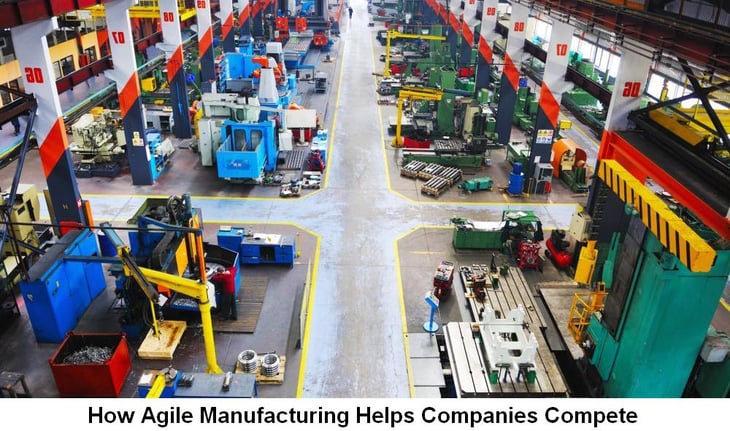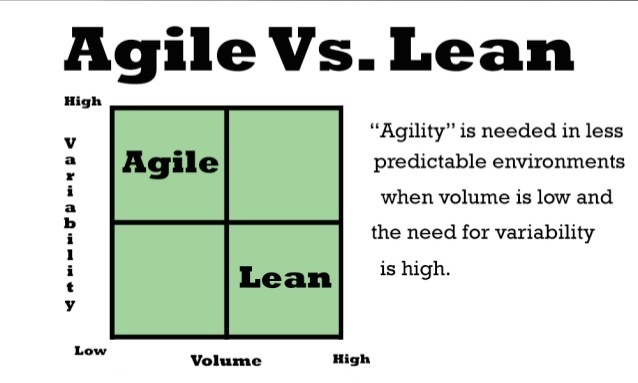
Agile manufacturing is a useful title under which a combination of methods and technologies are based. An agile paradigm in manufacturing is usually adopted to improve productivity and customer satisfaction, and thereby gain a competitive edge against non-agile manufacturers.
Agility is defined by quick and well-coordinated movements with a sense of adaptability and versatility. An agile manufacturing process allows businesses to respond with flexibility to customer needs as market conditions change, and to control their desired output while maintaining product quality and minimizing costs.
Agile Manufacturing is Based on Small Teams
Agile manufacturers tend to split their building projects into smaller modules. It becomes the company's responsibility to get these modules interfacing smoothly. Some trademarks of agile teams include:
- Focus on smaller teams to allow for better cooperation. These smaller teams' production is measured and quantified, allowing managers to respond to team bottlenecks and other impediments as they arise. These different teams can be closely coupled together by management to allow for cooperation and feedback.
- Development teams have a clear vision of what they have to build next. These product development cycles are usually short, and revisions to goals and processes can change every week based on feedback.
- Aims to integrate humans alongside robotics efficiently. For example, line staff can quickly set up robots to perform one-off welds of custom jobs at a faster rate than humans.
Agility implies that manufacturing teams have to adapt to changing market conditions quickly. It's essential that a company's project management techniques are nimble enough to keep up with changing market conditions.
An Agile Small-Scale Manufacturing Example
The facilities of a smaller operator will need to be able to produce the same world-class products compared to their larger competitors. Small manufacturers can use computer numeric control (CNC) equipment to automate processes that previously hadn't been. This allows products to be churned out faster at a higher quality.
As an example, a material handling equipment manufacturer can utilize an agile framework to make their product design adapt to any given market. For farmers to have their crops reach their maximum growth potential, farm machinery must be able to consistently operate at high levels while being easy to maintain.
To help improve crop yields, producers of farming equipment have begun to tap into agile manufacturing processes. Their tractor lift attachments can be quickly produced for agricultural markets as well as construction companies. The demand from the agricultural market would require a loader attachment to be manufactured for farming tractors. The end-users of their hauling equipment can be broadened through quickly designing and deploying different loader attachments.
An agile design methodology gives manufacturers like farming equipment companies a great "what-if" tool to take a concept and play with various parameters. Playing with different sizes allows smaller manufacturers to quickly fine tune a product based on the customer's requirements. This allows them to play with all those parameters and quickly understand whether or not a design is practical enough for real-world applications.
This allows the company's attachments and other equipment to be better focused on those particular jobs they're supposed to do. If the equipment is better focused, it's going to do a better job, and end-users like farmers will be more efficient when they use it.
How to Adapt and Make Your Manufacturing Agile
To adopt agile manufacturing, a change in management's mindset will usually be required. Agile methods compress time while combining with the cost-saving techniques of lean manufacturing. Goods can be delivered almost instantaneously while catering to individual specification requests.
To accomplish an agile workflow within a supply chain, companies must redesign their product manufacturing processes to meet these new principles. For example, the various departments in a company may sit in separate silos and not talk to one another. To achieve an agile workflow, product databases might need to be shared between marketers and designers. This will allow two separate teams to correct problems that reflect their input point in the process.
Lean Manufacturing Is Not the Same as Agile
It can be dangerous for manufacturers to adopt only a partially agile workflow. Manufacturers who have traditionally emphasized lean manufacturing (which aims for efficiency while minimizing costs) can unwittingly harm new product development. It's true that long lead times can be reduced by just-in-time manufacturing, cost reduction and improvement of supplier and customer relations. But lead times are already prioritized in an agile manufacturing process. When product development life cycles get too long, it can hinder a company's ability to compete in the marketplace.

Agile manufacturing aims for improved efficiency and lowered costs while reacting to changing market conditions. A hallmark of agile manufacturing is its ability to adapt and succeed where other manufacturing philosophies would suffer from their rigidity. Anecdotal evidence also suggests that agile teams are happier at work.
While it's true that successful people are happy, it's also true that happier people show superior performance, and goal-oriented employees do well in an agile setup as they can see immediate returns on their effort.












